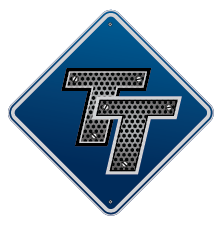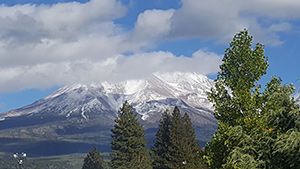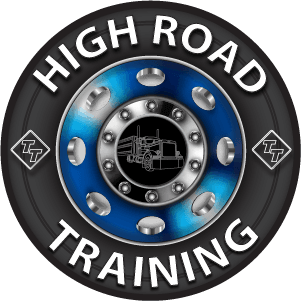How Do YOU Plan A Trip?
Topic 16259 | Page 1

By typing "trip planning" in the search bar, you will have all of this information returned: Trip Planning
Our trucks are governed at 63 mph. I divide total miles by 50 (mph) for trip planning, experience has proven that is a good number for me. Takes into account stopping for potty breaks, traffic, weather, allows for some unexpected things. Even though it seems like I should be able to go faster, that is how it usually works out for me. As for timing city traffic, I try to avoid 0600-0800 and 1500-1800. Friday afternoon/early evening is the worst. It helps if your shipper/receiver allows parking on site and you can hang out there a bit if needed. Sometimes, you just have to head out and deal with it. Personally, I hate night driving, so I end up with more traffic. The people who can go through cities at night have a big advantage.
Shipper:
The customer who is shipping the freight. This is where the driver will pick up a load and then deliver it to the receiver or consignee.
Well I haven't been doing this as long as others on here, but this is what I do and it works every time for me.
Trip plan at 50 mph (based on actual mileage) and plan on arriving 2 hours early. If I'm going through really high traffic areas I add an hour or two. As far as routing around certain cities, I don't usually do that. 9 times out of 10 my Qualcomm gives me the best route, but I rely on my atlas for the final word. Well, I use the bypasses typically, like 225, 215, etc, but again, my Qualcomm usually gives me the best way to get through these cities.
I try to avoid going through major cities at peak traffic times but sometimes it's just unavoidable and you have to plan a little extra time. I'm sure it depends on what region you run though. I don't run in the NE anymore so most of the time the large, high traffic areas are few and far between.
Here's an example with my current trip:
Pick up anytime before noon in Denver, CO--preloaded. I've been to this shipper before so I know I can be in and out in 30 minutes. I'm actually going to pick up at 11:00 today.
Deliver at 13:00 09/16 in Montebello, CA. This load cannot deliver early and it's a live unload. It's a 1000 mile trip and I am already in Denver.
At 50 mph the trip takes 20 hours, and I'm leaving the shipper at noon today. I can drive 12 hours a day (not really, but 12 hours comes out to 600 miles which is totally feasible). So I am going to add two 10 hour breaks so I can have a fresh clock when I deliver. That's 40 hours total. I could arrive as soon as 4 am MT. CA is in PT though so I could arrive at 3 am. Add two hours to get there early, so my eta is 5 am. Major cities--Vegas, LA area. Vegas shouldn't be bad, but CA is gonna suck. So I plan on an extra hour. Final ETA 09/16 @ 0600.
Shipper:
The customer who is shipping the freight. This is where the driver will pick up a load and then deliver it to the receiver or consignee.
Qualcomm:
Omnitracs (a.k.a. Qualcomm) is a satellite-based messaging system with built-in GPS capabilities built by Qualcomm. It has a small computer screen and keyboard and is tied into the truck’s computer. It allows trucking companies to track where the driver is at, monitor the truck, and send and receive messages with the driver – similar to email.OK Paul,
I'm with you on your calculation for your ETA, your plan for two 10 hour resets, and your allowance for a one hour traffic delay.
I'm not familiar with traffic in Las Vegas or LA, but it seems that you'll be in Vegas at mid-day and LA near mid-night. So I'd expect that you'd have more delays in Vegas than in the LA area. But that's not what I wanted to ask about.
Do you pre-plan your stops for your 8th hour rest break and your first 10 hour reset? Are you concerned about finding a parking space at the end of your day? If this consignee does not allow you to park on their site, how would you plan your final stop and how would you handle your clock when you restart to make the delivery?
And if that's not enough questions, don't worry. I'll have more shortly.
I'll be starting my CDL training at the local community college next month and I'm sure that I'll be back here at TT to ask more stupid questions.
CDL:
Commercial Driver's License (CDL)
A CDL is required to drive any of the following vehicles:
- Any combination of vehicles with a gross combined weight rating (GCWR) of 26,001 or more pounds, providing the gross vehicle weight rating (GVWR) of the vehicle being towed is in excess of 10,000 pounds.
- Any single vehicle with a GVWR of 26,001 or more pounds, or any such vehicle towing another not in excess of 10,000 pounds.
- Any vehicle, regardless of size, designed to transport 16 or more persons, including the driver.
- Any vehicle required by federal regulations to be placarded while transporting hazardous materials.
Consignee:
The customer the freight is being delivered to. Also referred to as "the receiver". The shipper is the customer that is shipping the goods, the consignee is the customer receiving the goods.
Hey John, those are definitely not stupid questions. It's the people who don't ask these questions that end up violating their HOS because they didn't plan ahead.
You asked:
Do you pre-plan your stops for your 8th hour rest break and your first 10 hour reset? Are you concerned about finding a parking space at the end of your day? If this consignee does not allow you to park on their site, how would you plan your final stop and how would you handle your clock when you restart to make the delivery?
In this part of the country during the day like this, I don't usually worry about planning for the 30 minute break. I usually start looking for a place to stop around the 5 or 6 hour mark. I do plan ahead for the 10 hr break though. I'll probably stop around 1700 or 1800 tonight. Some truck stops are already full at that time so I use the Trucker Path app to know which ones should have spots avilable at that time. This consignee does not allow parking so I'll take a 10 hr reset before I get there either at a truckstop outside LA or at Swift's infamous Jurupa Valley terminal. When I head to the consignee, I'll have a full clock so I have hours to get the heck out of LA lol.
I'm not familiar with traffic in Las Vegas or LA, but it seems that you'll be in Vegas at mid-day and LA near mid-night. So I'd expect that you'd have more delays in Vegas than in the LA area.
Vegas isn't bad during the day--at least nothing worth planning extra for IMO. LA always sucks except in the middle of the night, and even then it sucks sometimes. So I'm planning on getting stuck in traffic at some point. And I'll be hitting Vegas during the day anyways.
Consignee:
The customer the freight is being delivered to. Also referred to as "the receiver". The shipper is the customer that is shipping the goods, the consignee is the customer receiving the goods.
Terminal:
A facility where trucking companies operate out of, or their "home base" if you will. A lot of major companies have multiple terminals around the country which usually consist of the main office building, a drop lot for trailers, and sometimes a repair shop and wash facilities.
HOS:
Hours Of Service
HOS refers to the logbook hours of service regulations.
John L wrote:
OK Paul,
I'm with you on your calculation for your ETA, your plan for two 10 hour resets, and your allowance for a one hour traffic delay.
I'm not familiar with traffic in Las Vegas or LA, but it seems that you'll be in Vegas at mid-day and LA near mid-night. So I'd expect that you'd have more delays in Vegas than in the LA area. But that's not what I wanted to ask about.
Do you pre-plan your stops for your 8th hour rest break and your first 10 hour reset? Are you concerned about finding a parking space at the end of your day? If this consignee does not allow you to park on their site, how would you plan your final stop and how would you handle your clock when you restart to make the delivery?
And if that's not enough questions, don't worry. I'll have more shortly.
I'll be starting my CDL training at the local community college next month and I'm sure that I'll be back here at TT to ask more stupid questions.
Welcome! Recommended reading/study for someone entering school:
- Truck Driver's Career Guide
- Brett's Book: The Raw Truth About Trucking (free online version)
- High Road Training Program
CDL:
Commercial Driver's License (CDL)
A CDL is required to drive any of the following vehicles:
- Any combination of vehicles with a gross combined weight rating (GCWR) of 26,001 or more pounds, providing the gross vehicle weight rating (GVWR) of the vehicle being towed is in excess of 10,000 pounds.
- Any single vehicle with a GVWR of 26,001 or more pounds, or any such vehicle towing another not in excess of 10,000 pounds.
- Any vehicle, regardless of size, designed to transport 16 or more persons, including the driver.
- Any vehicle required by federal regulations to be placarded while transporting hazardous materials.
Consignee:
The customer the freight is being delivered to. Also referred to as "the receiver". The shipper is the customer that is shipping the goods, the consignee is the customer receiving the goods.
I plan around cities and traffic all the time. The other day I left for shipper at 0400 to be there at 0700. Got out of there at 1000. At 1400 ishut down 50 miles outside of city. No problem finding parking. Got rolling again at midnight. Took 2/hour break at 0700 to 0900. Shut down by noon. Means no driving in morning or afternoon traffic. If I can park at customer I do 8hrs on sleeper to delay my day then roll out. It also allows me to get an average of 60mph. I know I can do 300 miles in 5 hours add an hour for getting lost, an hour for breaks, an hour for slow roads. If FM asks for eta I tell him "officially at the end of my 14, most likely x hours sooner"
I also make a list of three or four possible shut down locations. If I know I'm going to be past 1700 I reserve parking.
I think people forget that whether you drive 10 hours then break 10 hours or reverse the order, it is still 20 hours. However when you drive at night you don't deal with traffic parking issues and scales.. Nor waiting at washes. So essentially I can get more done quicker by driving at night so I don't even have to dive as long
Shipper:
The customer who is shipping the freight. This is where the driver will pick up a load and then deliver it to the receiver or consignee.
Fm:
Dispatcher, Fleet Manager, Driver Manager
The primary person a driver communicates with at his/her company. A dispatcher can play many roles, depending on the company's structure. Dispatchers may assign freight, file requests for home time, relay messages between the driver and management, inform customer service of any delays, change appointment times, and report information to the load planners.New Reply:
New! Check out our help videos for a better understanding of our forum features

















Preview:









 TT On Facebook
TT On Facebook
Just wondering what the methodology is for trip planning. That's one thing we didn't really do in training, we just punched in gps address and off we went.
I figure it's something I need to become proficient at so I can be more efficient in my trips.
So, if you could give some pointers and tips, things you account for, things you watch out for etc..
So far, my trip planning has just been figuring out how long it will take me to make the trip based on miles divided by speed, which I use 55mph for all my trips. By doing that, I can get an estimate on how long it will take me to make the trip, then I'll start estimating rest breaks, when I'll drive and when I'll be on 10 hour breaks, which will give me an idea of what time I'll be close to my destination.
I never did, however, figure out how to plan around driving through big cities, to avoid traffic though. Seems to me that would all depend on when you left the shipper , and not anything you could really control, unless you left the shipper at a later time, or shorted a driving day a little and took a rest break early in order to change the time of day you'd be driving through a particular area.
Short of that, I don't see how you could avoid driving through an area, if you left the shipper right after being loaded, and the big city was on your route, and the distance from the shipper to the heavy traffic area was such that the time it would take you to drive there matched up with the time that traffic was heavy...unless you routed around the city.
And if routing around a city is the answer, do you simply look at your route, find all the major cities you are going through (or other obstacle areas), the mileage between you and that area, then you figure how long it will take you to get there, then figure the time of day and if it coincides with a rush hour, then you find a road around it?
Anyway, just wanting to see your method for trip planning so I can get some ideas to start forming my own method.
Thanks
Shipper:
The customer who is shipping the freight. This is where the driver will pick up a load and then deliver it to the receiver or consignee.